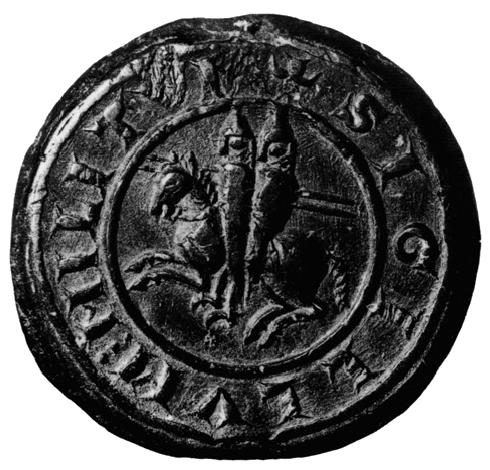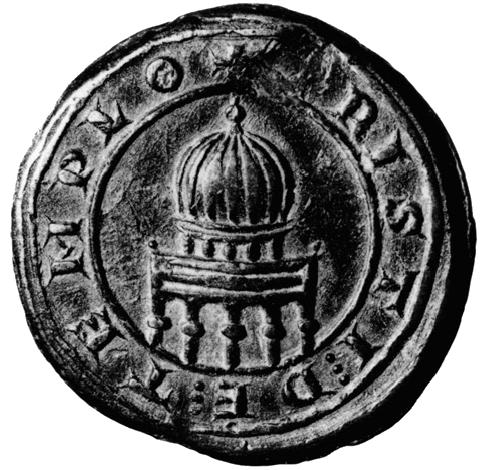
Find the perfect fit with Amazon Prime. Try Before You Buy.
Seal of Bertrand de Blancafort, Master of the Temple



Images produced by the Order: the lead seal of Brother Bertrand de Blancafort, master of the Temple, from a charter of 27 April 1168, showing two knights on one horse. Although its meaning was unclear, this was the best-known image of the Order. Outsiders variously believed that the image symbolized the poverty of the Order in its early days, or the brothersí charity in helping other knights on the battlefield.
(Staatsarchiv Amberg, Kloster Waldsassen U 7/1; © Staatsarchiv Amberg)

Reverse side of the same seal, showing the cupola of the dome of the Church of the Holy Sepulchre. This image was important for the Order because it had originally been set up by knights who had been lay members of the religious community at that church, and its overriding purpose was to protect the Church of the Holy Sepulchre as the central shrine of the Christian faith.
(Staatsarchiv Amberg, Kloster Waldsassen U 7/l; © Staatsarchiv Amberg)
Source: p.164, Godís Warriors, Knights Templar, Saracens and the Battle for Jerusalem by Helen Nicholson & David Nicolle
Referenced on p.23, WAR - 091 - Knight Templar 1120-1312 by Helen Nicholson
Images produced by the Order: the lead seal of Brother Bertrand de Blancafort, master of the Temple, from a charter of 27 April 1168 showing two knights on one horse. Although its meaning was unclear, this was the best known image of the Order (see page 28). Outsiders variously believed that the image symbolised the poverty of the Order in its early days, or the brothersí charity in helping other knights on the battlefield Staatsarchiv Amberg, Kloster Waldsassen U 7/1; copyright Staatsarchiv Amberg).